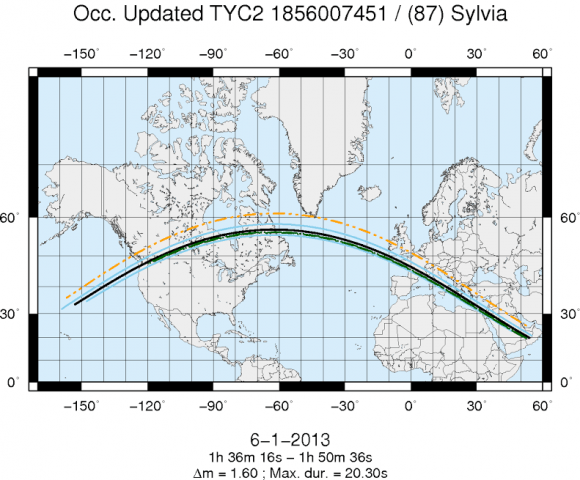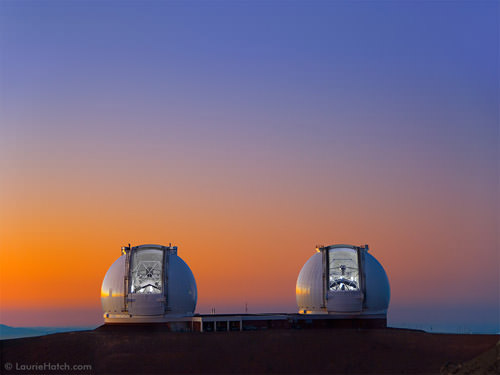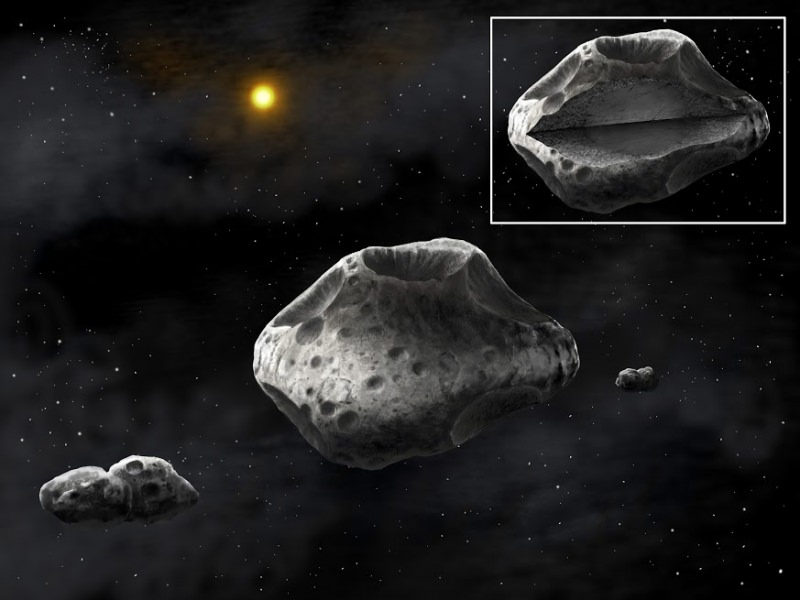Fluffy, with a core of density. That’s what the interior of the asteroid 87 Sylvia likely looks like, astronomers say. The neatest thing about that observation? It didn’t require a drill or even a spacecraft visit. That came from watching the orbits of the asteroid’s two moons, Romulus and Remus.
The discovery illustrates the power of amateur and professional astronomers working together, the team said. On Jan. 6, dozens of small telescopes across France, Greece and Italy were set up to watch a celestial show: watching Sylvia move in front of an eleventh-magnitude star. The professionals received assistance from European Asteroidal Occultations (EURASTER), a group of professional and amateur observers, for this event.
“Observers at different locations see different parts of the asteroid, or its moons, passing in front of the star,” the team stated in a press release. “Such occultations allow exquisitely precise measurements of the relative positions and sizes of the occulting objects.”
Of the 50 observers watching the show, twelve of them saw the occultation, which lasted anywhere from four to 10 seconds depending on where the observers were.

Subsequently, the professional astronomers determined how Sylvia is shaped by using that information and combining it with other data, such as recordings of the asteroid’s light variations that happened as it spun, and some direct images using adaptive optics. The team noted that Romulus and Remus don’t seem to change in their paths in space due to Sylvia’s non-circular shape, making them conclude that it has an interior of different materials.
All told, there were 66 adaptive optics observations of the asteroids using 8 to 10 meter telescopes at the W. M. Keck Observatory, the European Southern Observatory, and Gemini North. Calculations of the system came from the Institute of Celestial Mechanics and Ephemerides Calculations (IMCCE) of the Paris Observatory.

“Four observers detected a two-second eclipse of the star caused by Romulus, the outermost moon, at a relative position close to our prediction. This result confirmed the accuracy of our model and provided a rare opportunity to directly measure the size and shape of the moon,” stated Jérôme Berthier, an IMCCE astronomer.
“Combined observations from small and large telescopes provide a unique opportunity to understand the nature of this complex and enigmatic triple asteroid system,” added Francis Marchis, a senior research scientist at the Carl Sagan Center of the SETI Institute, who led the research. “Thanks to the presence of these moons, we can constrain the density and interior of an asteroid, without the need for a spacecraft’s visit. Knowledge of the internal structure of asteroids is key to understanding how the planets of our solar system formed.”
The results were presented yesterday (Oct. 7) at the American Astronomical Society’s division of planetary sciences meeting in Denver.
Source: W.M. Keck Observatory

